Submit your article of up to 500 words in length, subject to editing for clarity and brevity (please note: I run only original articles that have not appeared on any Web site or in any publication and I can’t use anything that looks like a commercial pitch). I’ll use a phony name for you unless you tell me otherwise. Thanks for sharing!
Note: the views and opinions expressed are those of the authors personally and are not necessarily representative of their current or former employers.
Baseball Traditionalists: Whose “Use” was More Meaningful?
By Robert D. Lafsky, MD
Isn’t it fascinating to follow the daily progress of a battle that pits traditionalists against digitally-armed insurgents? On the one side are deeply-entrenched practitioners of an ancient art dependent on subjective judgment calls that, in their view, can only be described in descriptive natural language. On the other side are advocates of a granular hard data approach that, although tedious and opaque to the untrained, reveals insight into previously unseen trends and realities.
Ain’t baseball something?
You do have to admit, if you’ve read the sports pages lately, that the battles in the sport eerily reflect arguments that run through the pages and comment sections of this blog. I cite as the crowning example the brouhaha over the naming of Miguel Cabrera as this year’s National League Most Valuable Player.
The traditionalists have a powerful argument for Cabrera. For one thing, his Detroit Tigers won their division and went to the World Series, while second place Mike Trout’s LA Angels finished third in their division. And Cabrera was the first Triple Crown winner (highest batting average, most homers, and runs batted in) in 45 years. He had a knack for hitting when it really counted, and he selflessly agreed to move to third base from first when the Tigers acquired the powerful but slow Prince Fielder. The traditionalists say it’s obvious he’s the MVP.
But the “Moneyball” guys have their points about Trout. Using highly sophisticated and detailed data, they determined using a measure called “wins over replacement,” — using not only batting statistics, but defensive and even individual ballpark factors to compare Trout to an average replacement player — he accounted for 10.7 additional wins for the Angels over 6.9 Tiger wins for Cabrera. And that, to them, is what matters. All that other stuff is dismissed by these “Sabermetricians” as mere “narrative.”
But the traditionalists could ask, I suppose, the following cogent question: whose “use” during the season was more “meaningful”?
That’s an obvious parallel to current trends in medical computing, right? Well, let’s not forget an obvious point. Baseball has always been a thing entirely made up by humans. Before these high-end statistics were developed, it had a clear-cut set of rules and a clear-cut goal–scoring the most runs in the most games.
Medicine’s rules, on the other hand, are essentially defined by nature, and after more than 40 years in the field, I still wonder what the goals of practice really are. Fewer deaths, of course, but that’s really hard to count. And we know that people focus on a lot of other things that don’t affect critical outcomes like death and disability.
So, no — it’s way more complicated. And advocates of evidence-based practice make valid points. We won’t settle any arguments here. But I know that obtaining and analyzing data is hard.
Which is why we need baseball. Go ahead and break for home, Bryce Harper. When that happens, we don’t need no stinkin’ statistics.
Robert D. Lafsky, MD is a gastroenterologist and internist in Lansdowne, VA.
The EHR Conversion Staffing Dilemma: Cost vs. Go-Live Disaster
By Don Sonck
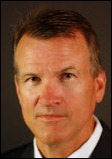
With the window to initiate participation in the Medicare EHR Incentive Program expiring in 2014, the next two calendar years are certain to be chaotic within the EHR arena. With an ever-increasing number of hospitals and physician groups already scheduled to implement an EHR and still others in the final selection stage, internal and external resources necessary to staff these critical and expensive projects are already at a premium.
Particularly on the acute support side of these projects, professional consultants (internal and external) who possess clinical experience and know firsthand the inner workings of a hospital or ambulatory environment should be utilized. Ratios of one acute EHR professional for every four to five core clinical staff members is optimal. Any ratio greater typically results in frustration and morale decline, extended end user adoption, residual training, and of course, increased expense.
Far too often I’ve encountered healthcare systems of all sizes (as well as physician practices) that underestimate the importance of clinical support staff. During EHR post-mortem discussions, leadership rues the fact they overlooked or underappreciated the skill and expertise that clinical resources bring to the table, particularly during the critical 4-6 weeks just prior and subsequent to go-live. Too often, the main focus and budget allocation is on the EHR build and associated infrastructure costs. IT consultants are justifiably a majority slice of the overall project budget pie, but these same resources are ill prepared for and lack the “soft” skills to prosper as super users with core clinical staff during that chaotic go-live window.
My advice? Do not rely solely on overtime utilization of existing staff, the float pool, or seasonal staff. Make sure you pay for the ala mode on top of that budget pie in the form of nurses, therapists, and physicians who are seasoned in both go-live experience and the particular EHR vendor software to which you are migrating. When blended with existing core staff, these clinicians can assist in both patient care and technical guidance on the electronic charting process, easing your clinical team’s anxiety, reducing overtime, minimizing the need for additional EMR training consultants, and accelerating the adoption and knowledge of the EHR software.
When considering the employment of third-party clinical support staff, avoid the pitfall of waiting until the eleventh hour to pull the trigger. Human resources and nurse recruiting teams have enough on their plate without the added burden of answering these questions for themselves:
- How will nurses and physicians learn the system and treat their patients at the same time?
- What scheduling challenges will we experience due to the temporary decrease in productivity?
- Who will handle my core employees’ technology aversion?
- Will overtime compensate for coverage during classroom training time?
- What will be our electronic charting standards be day one, week two, and month one?
- Who will be taking care of orientation, credentialing, and my other duties during implementation?
- What will my patients experience be during go-live?
Be an early adopter of the clinical staffing question, at least six months prior to go-live. Your CFO, CIO, and CNO will all thank you.
Don Sonck is director of EMR staffing solutions of AMN Healthcare of San Diego, CA.
Questions for ONC and the Obama Administration
By John Gomez

The Meaningful Use program requires technology to be adopted and utilized by healthcare providers and payers throughout the United States. The funding for these programs is coming from federal tax dollars All that is well and good. In the long term, we will hopefully see a good return on these investments through standardized care, lowered administrative overhead, and a reduction in medical errors that affect patients.
The technology that is designed, developed, tested, and deployed to support Meaningful Use requires literally thousands and thousands of engineers, consultants, product and program managers, not to mention all the system administrators, network managers, and others. It is perplexing to me though, that in these times of economic hardships, many healthcare software vendors and secondary software service providers offshore these positions.
For instance, companies like Allscripts have huge staffs in India and smaller presence in Canada. Some companies are offshoring to Israel, China, and Europe. Given that we as taxpayers are funding the Meaningful Use program, shouldn’t there be a provision requiring that those companies benefiting from these programs only utilize US-based resources?
There is potentially a silly argument that could be made that if were to require these companies to use US resources, they would need to charge more for their products and services and that would ultimately cause a deeper burden to the taxpayer. That is an accurate knee-jerk response based on lack of information and research.
We could keep these jobs here in the United States and not increase the cost of operations for these companies if these companies fill these positions in areas of the United States that are hardest hit by the current state of our economy. The level of talent, required training, and other factors would be similar if not better then that which is encountered outside our borders.
I realize that this is not a simple problem. Wall Street and private equity firms are more interested in margin improvement then really considering the long-term benefit to our country. But in my eyes, I think that creating jobs here is a priority.
We should do what we can to get more Americans working, even if it impacts the margins of healthcare software companies or slightly raises the cost of software or services. When you have a program as big as Meaningful Use, the benefit should be well beyond that of its primary objective.
John Gomez is CEO of JGo Labs of Asbury Park, NJ.
Stage 2: You Ain’t Finished ‘till the Paperwork is Done
By Frank Poggio

Many years ago I saw a cute little cartoon that pictured a three-year-old climbing off a commode. Standing next to him was his mother, instructing him that he wasn’t finished until his paperwork was done. Well now, the characters in that cute cartoon can be replaced by a vendor and the ONC, respectively.
Two new Stage 2 test scripts for certification will require vendors to supply documentation previously not needed under Stage 1. They are:
- Safety Enhanced Design – 170.314(g)(3), and
- Quality Management System – 170.314(g)(4)
Safety Enhanced Design (SED). In early drafts of Stage 2, this criterion was referred to as User-Centered Design. The primary impetus for SED came from the November 2011 IOM report (Health IT and Patient Safety: Building Safer Systems for Better Care) that lamented the lack of built-in safety elements in many clinical software products.
An excerpt from the ONC test script describing SED follows:
This test evaluates the capability for a Complete EHR or EHR Module to apply user-centered design for each EHR technology capability submitted for testing and specified in the following certification criteria:
§ 170.314(a)(1) Computerized provider order entry
§ 170.314(a)(2) Drug-drug, drug-allergy interaction checks
§ 170.314(a)(6) Medication list
§ 170.314(a)(7) Medication allergy list
§ 170.314(a)(8) Clinical decision support
§ 170.314(a)(16) Inpatient only – electronic medication administration record
§ 170.314(b)(3) Electronic prescribing
§ 170.314(b)(4) Clinical information reconciliation
The Tester shall verify that for each EHR technology capability submitted for testing and specified in the above-listed certification criteria, the Vendor has chosen a user-centered design (UCD) process that is either:
A) UCD industry standard (e.g.; ISO 9241-11, ISO 9241-210, ISO 13407, ISO 16982, and ISO/IEC 62366); and submitted the name, description, and citation or,
B) Not considered an industry standard (i.e. may be based upon one or more industry standard processes); and submitted the named the process(es) and provided an outline and description of the process(es)
The Tester shall examine each Vendor-provided report to ensure the existence and adequacy of the test report(s) submitted by the manufacturer. The Tester shall verify that the report(s) conform to the information specified in NISTIR 7742 Customized Common Industry Format Template for Electronic Health Record Usability Testing.
Full EHR vendors must address this new requirement, while EHR Module vendors can skip it if your certification request does not include any of the above criteria. On the other hand, if your EHR Module includes even one of the above, you then must address the SED for that criteria.
The second new criterion questions the use of a Quality Management System 170.314(g)(4). The ONC-published test script states the following:
For each capability that an EHR technology includes and for which that capability’s certification is sought, the use of a Quality Management System (QMS) in the development, testing, implementation and maintenance of that capability must be identified.
– The Vendor identifies the QMS used or indicates that no QMS was used in the development, testing, implementation and maintenance of each capability being certified
– The Tester verifies that for each capability for which certification is sought, the Vendor has
- Identified an industry-standard QMS by name (for example, ISO 9001, IEC 62304, ISO 13485, ISO 9001, and 21 CFR, Part 820…)
- Identified a modified or “home-grown” QMS and an outline and short description of the QMS, which could include identifying any industry-standard QMS upon which it was based and modifications to that standard
- Indicated that no QMS was used for applicable capabilities for which certification is requested
Clearly ONC is interested in learning more about what QA tools vendor use (if any) for each of the submitted Stage 2 criteria. Under Stage 2, per step 3 above, you do not have to have a formal (or any) QA process available. No QMS is an acceptable answer. But, you can easily guess what will happen in Stage 3. Words to the wise: if today you do not incorporate in your systems development a formal and documented QA process, better get one soon.
Last year in a previous HIStalk post I referred to the FDA coming to EMR systems through the back door. SED is a big step in. I fully expect the criteria covered to expand in Stage 3, and expect the depth and extent of the documentation submission to expand as the test agencies (ACB) gain more experience in 2013.
Lastly, if your staff is not familiar with the ISO and IEC standards, better do some homework. I suspect that the best of breed /specialty and new HIT startup firms would have a more difficult time in addressing SED than the large legacy firms. Documentation and QA are typically not their strongest suits.
All the new Stage 2 criteria and test scripts can be found here.
Frank Poggio is president of The Kelzon Group.
The Jury is No Longer Out
By Nicholas Easter
Very recently, I was a summoned to District Court for my civic responsibility of jury duty. Unlike many Americans, I relish the opportunity to sit for a jury trial, as it affords me the great opportunity to assist in the beautiful process of democracy. Unfortunately, the attorneys did not choose me this time around. But there is always next week, when I will be summoned to return.
Due to my freedom from this specific trial, I can comment on some of the particulars, but the important message from this trial comes from the other panelists as the voir dire was conducted.
In short, the case was/is an inmate at a federal detention facility (prison) attempting to sue members of the healthcare team at the facility for negligence in treating his life-threatening illness. A mix of guards, nurses, PAs, and a doctor being sued by an inmate for violation of the 8th Amendment to the US Constitution, since it is a constitutional question, was remanded to Federal District Court.
Eighteen lucky people were selected to move from the pews to the comfy seats in the jury panel. Each was interviewed by the judge and asked a series of questions to whittle the number down to 10 jurors.
Among the questions was a seemingly innocuous one: “What is your opinion on the healthcare provided to inmates?” Each of the 18 responded that they believed it was a right for each and every prisoner to receive fair and adequate medical attention. Of the panelists, there were teachers, engineers, consultants, unemployed persons, and the director of a local emergency room’s nursing team. I repeat, every single one thought it was the duty of the Federal Department of Corrections to provide ample and adequate healthcare to its inmates.
I believe it is time to formally reaffirm that a majority of this country believes that access to quality healthcare is a right afforded to each and every citizen, even felons. It is this basic comment on the structure of our society that gives a full and formal mandate to our leaders in Washington DC to complete the process of unifying the delivery of healthcare in America to make it accessible and affordable for all Americans.
If 18 randomly selected Americans above the age of 18 without any prior convictions for felonies can confirm that this basic right is required for criminals, then it ought to signal that it is high time to continue to find ways to make this an affordable reality for the remainder of Americans.
Social scientists agree that the “Social Strain Theory” is accurate. The greatest impetus to criminal behavior is poverty. America’s healthcare system can easily push even the most well-heeled patients into poverty. Hopefully the healthcare system of tomorrow will recognize the sharpness of its sword as it begins to eradicate a lot of ills that befall our society.






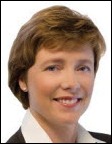



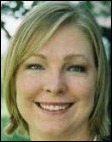
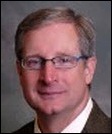
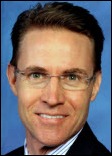
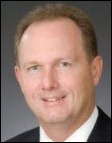



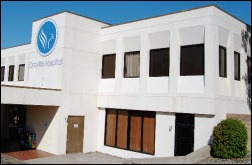
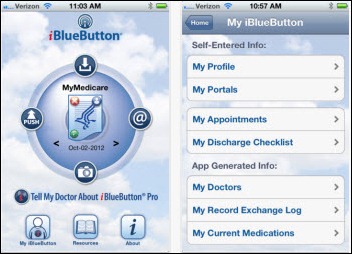
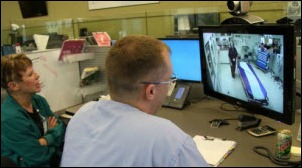
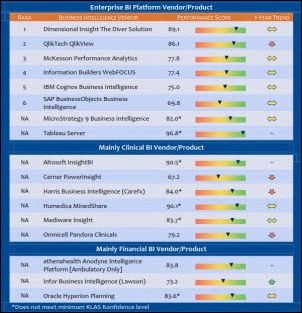
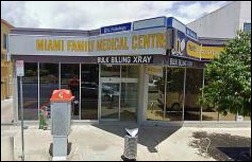







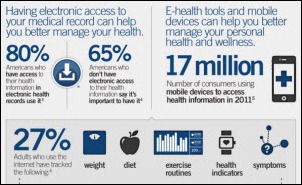
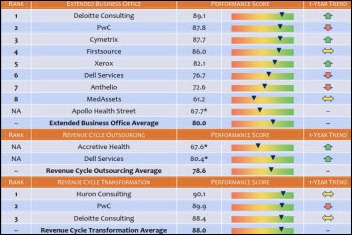
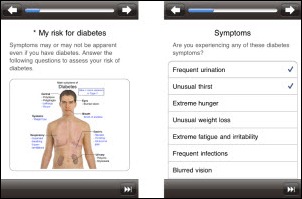
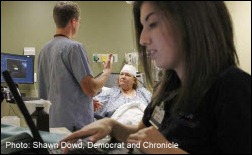










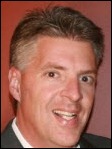
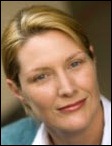

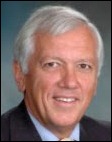


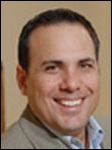
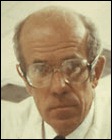


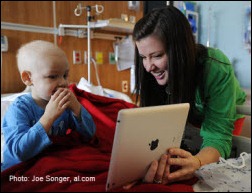

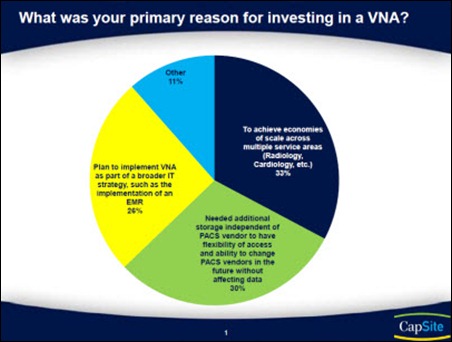




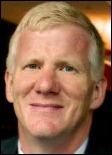
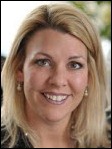
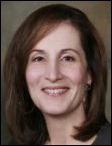


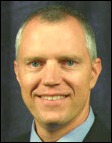

Merry Christmas and a Happy New Year to the HIStalk crowd. I wish you the joys of the season!